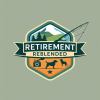Bring on the Treats, the Games, and the Tail Wags
When it comes to training our dogs, it might seem logical to drill commands over and over until they’re perfect. But the more I learn about dog training and by watching my own dog’s reaction to this method, I wonder if that approach could actually do more harm than good.
At a training event I attended last year, there was discussion on what’s commonly known as the 20/80 Rule a training philosophy that encourages dog owners to spend just 20% of their time actively training and the other 80% playing, bonding and having fun with their dogs.
What is the 20/80 Rule?
The 20/80 Rule flips traditional training on its head. Rather than focusing heavily on repetition and correction, this approach emphasizes creating a positive emotional connection with your dog. The goal? A well-behaved companion who actually enjoys learning.
Here’s how it breaks down:
- 20% = Focused Training Time
Short, positive and consistent training sessions that teach or reinforce behaviours. Think 5–10 minute spurts a few times a day, using clear communication, rewards and praise. - 80% = Play, Exploration and Relationship-Building
This includes walks, games like tug or fetch, sniffing in the garden, socialisation and just hanging out with you. These moments build trust, confidence and the kind of bond that makes your dog want to listen.
Why It Works
1. Dogs Learn Better When They’re Happy
Studies in canine cognition show that dogs learn faster when they’re relaxed and having fun. If training becomes stressful or overly demanding, learning stalls and behaviour can even regress.
2. Strong Bonds Lead to Better Behaviour
Dogs who trust their owners are more responsive and less likely to act out. By investing in time together that isn’t just “work,” you create a relationship built on mutual respect and affection.
3. Short Sessions Prevent Burnout
Just like us, dogs can become mentally fatigued. Shorter, high-quality training sessions are more effective than long ones, especially when paired with lots of positive downtime.
What 20/80 Looks Like in Real Life
Let’s say you spend 30 minutes out in the garden with your dog. Here’s how that might be divided:
- 5–6 minutes: Practising recall, sit-stays or obedience positions
- 24–25 minutes: Playing tug, letting your dog sniff, tossing a ball or just being silly together
Bonus: That “play” time still reinforces learning. Dogs naturally repeat behaviours that make them feel good. So if coming when called leads to a quick game of chase or tug? You’ve just trained a strong recall without it feeling like a lesson.
Perfect for Retirement Living
One of the joys of retirement is having more time for the things (and creatures) you love. The 20/80 Rule fits beautifully into a slower, more meaningful pace of life. It allows you to:
- Enjoy relaxed, low-pressure time with your dog
- Build a rewarding routine around your shared lifestyle
- Train without stress on your terms and theirs
Whether you’re training a new pup or refining skills with a senior dog, this method supports a more balanced, enjoyable journey.
Watch the Video
I’ve created a YouTube video explaining this concept in more detail, featuring insights from my experience of introducing it into our training. In future videos you will also see some examples of what this looks like in real training and play sessions with my own dog.
Let’s Keep the Conversation Going
Have you tried the 20/80 Rule with your dog? Let us know how it’s working for you! You can reach me at jackie@retirementreblended.com or connect with me through the comments on YouTube.
